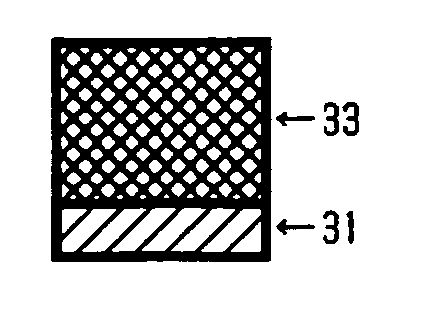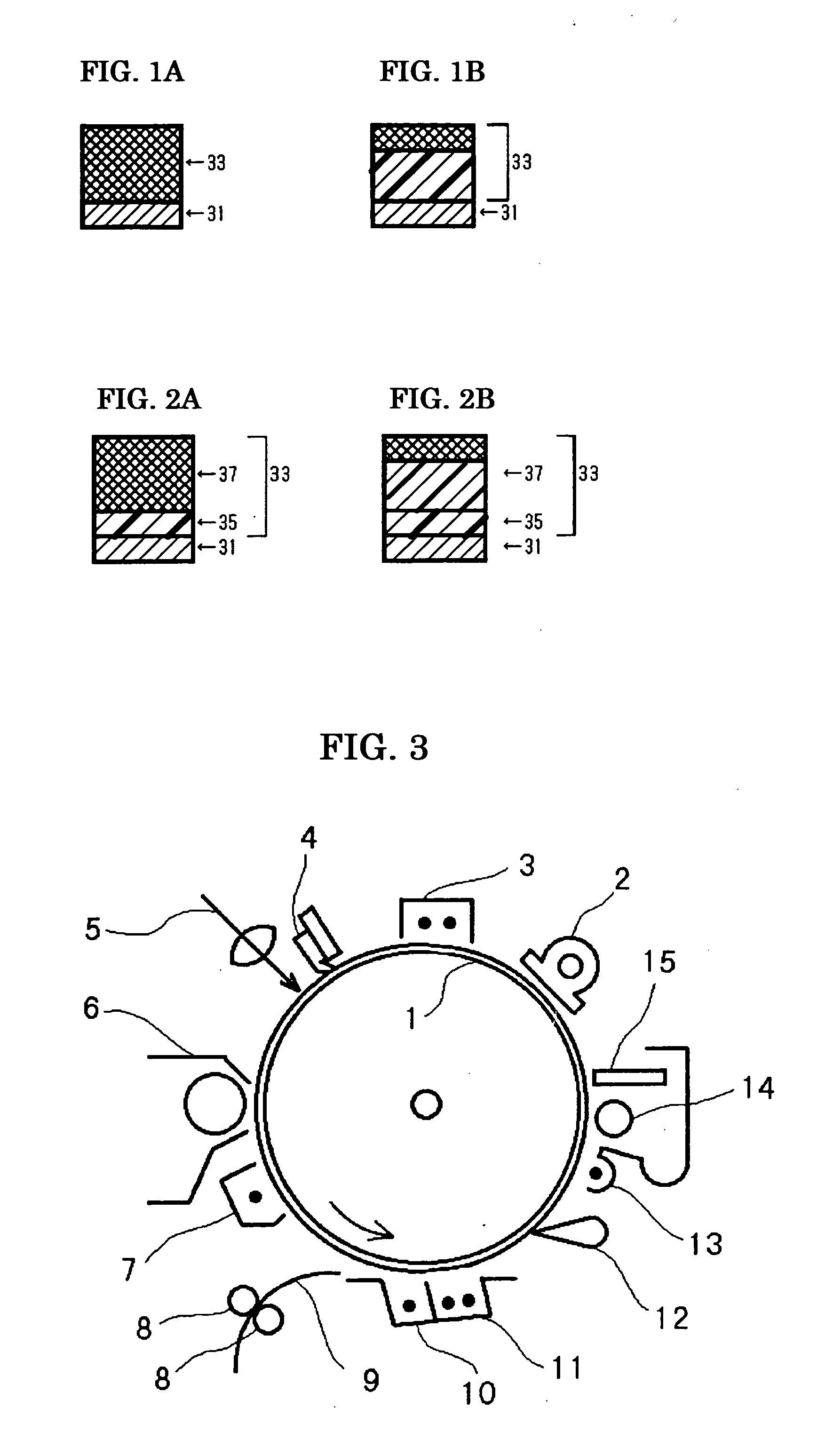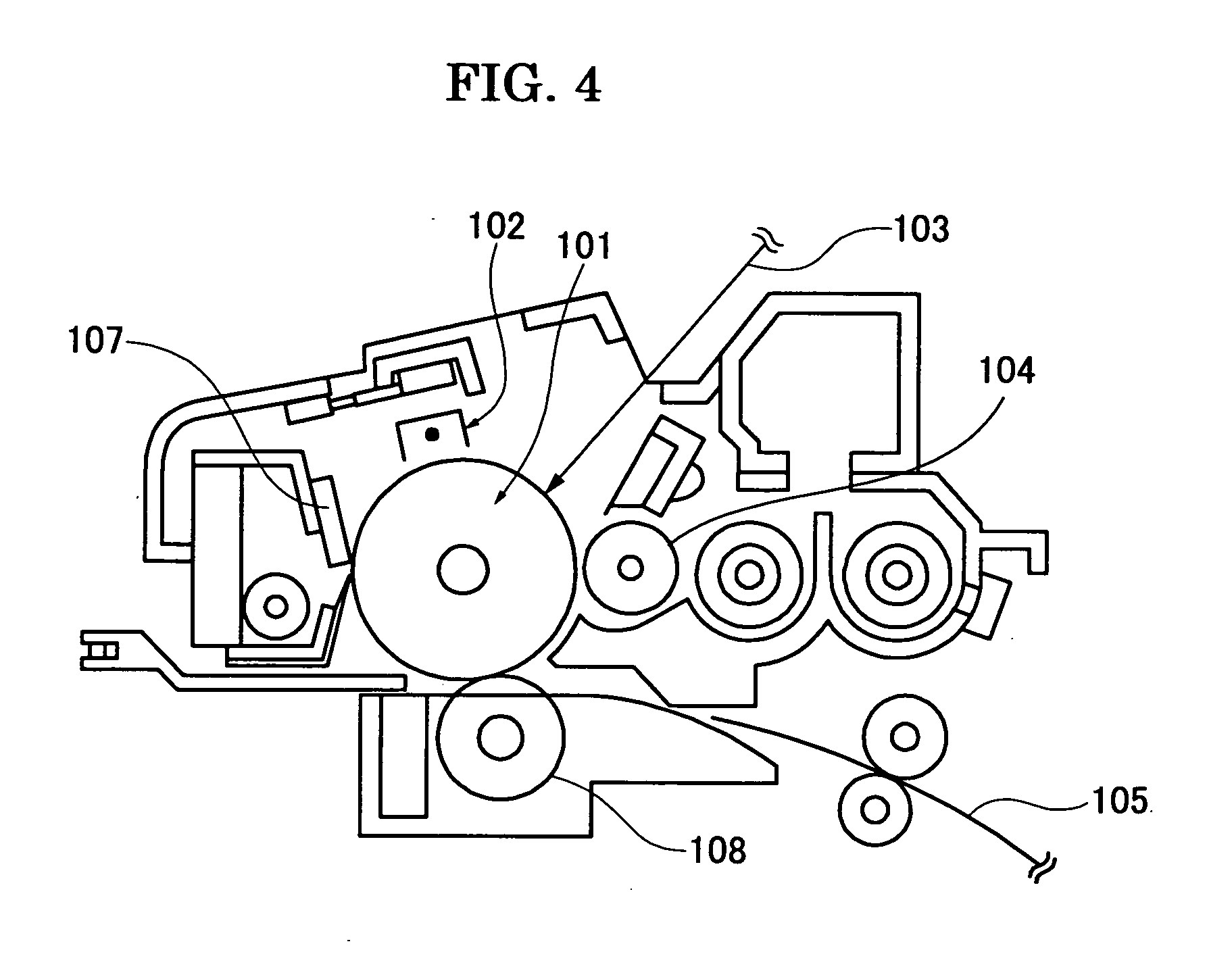Photoconductor, image forming process, image forming apparatus, and process cartridge
a photoconductor and image forming technology, applied in the direction of electrographic process, corona discharge, instruments, etc., can solve the problems of higher wear rate of photoconductors, less durability of organic photoconductors, and high surface layer wear, so as to achieve excellent flaw resistance, appropriate electric properties, and superior wear resistance
- Summary
- Abstract
- Description
- Claims
- Application Information
AI Technical Summary
Benefits of technology
Problems solved by technology
Method used
Image
Examples
example 1
[0225] On an aluminum cylinder of 30 mm in diameter, the coating liquid for undercoat layer, the coating liquid for charge generating layer, and the coating liquid for charge transport layer, each having the composition described below, were sequentially applied and dried to form an undercoat layer of 3.5 μm thick, a charge generating layer of 0.2 μm thick, and a charge transport layer of 18 μm thick.
[0226] Then, the coating liquid for crosslinked layer having the following composition was coated over the charge transport layer by spray coating, and the coating was subjected to optical irradiation using a metal halide lamp of 160 W / cm under the conditions of 120 mm from the light source, 500 mW / cm2 of irradiation energy, and 30 seconds of irradiating period, and then was subjected to heating at 130° C. for 20 minutes, thereby yielded a crosslinked layer of 4 μm thick and the inventive photoconductor was obtained.
[0227] [Coating Liquid for Undercoat Layer]
Alkyde resin 6 parts(Becko...
example 2
[0231] A photoconductor was produced in the same manner as Example 1, except that the radical polymerizable monomer having three or more functionalities and no charge transport structure in Example 1 was changed into the monomer described below.
Radical polymerizable monomer having three or more10 partsfunctionalities and no charge transport structureDimethylolpropane tetraacrylate (SR-355, by Kayaku SartomerCo.), molecular mass: 466, number of functional group: four,molecular mass / number of functional group = 117
example 3
[0232] A photoconductor was produced in the same manner as Example 1, except that the radical polymerizable monomer having three or more functionalities and no charge transport structure, the photopolymerization initiator, and the thermal polymerization initiator in Example 1 were changed into those described below.
Radical polymerizable monomer having three or more10 partsfunctionalities and no charge transport structurePentaerythritol tetraacrylate (SR-295, by Kayaku Sartomer Co.)molecular mass: 352, number of functional group: four,molecular mass / number of functional group = 88Photopolymerization initiator 2 parts2,2-dimethoxy-1,2-diphenylethane-1-one(IRGACURE 651, by Ciba Specialty Chemicals Co.)Thermal polymerization initiator 2 partst-butyl-peroxy-2-ethylhexanoate (Kayaester O, by Kayaku AkzoCo.)
PUM
| Property | Measurement | Unit |
|---|---|---|
| Percent by mass | aaaaa | aaaaa |
| Percent by mass | aaaaa | aaaaa |
| Mass | aaaaa | aaaaa |
Abstract
Description
Claims
Application Information
 Login to View More
Login to View More - R&D
- Intellectual Property
- Life Sciences
- Materials
- Tech Scout
- Unparalleled Data Quality
- Higher Quality Content
- 60% Fewer Hallucinations
Browse by: Latest US Patents, China's latest patents, Technical Efficacy Thesaurus, Application Domain, Technology Topic, Popular Technical Reports.
© 2025 PatSnap. All rights reserved.Legal|Privacy policy|Modern Slavery Act Transparency Statement|Sitemap|About US| Contact US: help@patsnap.com



